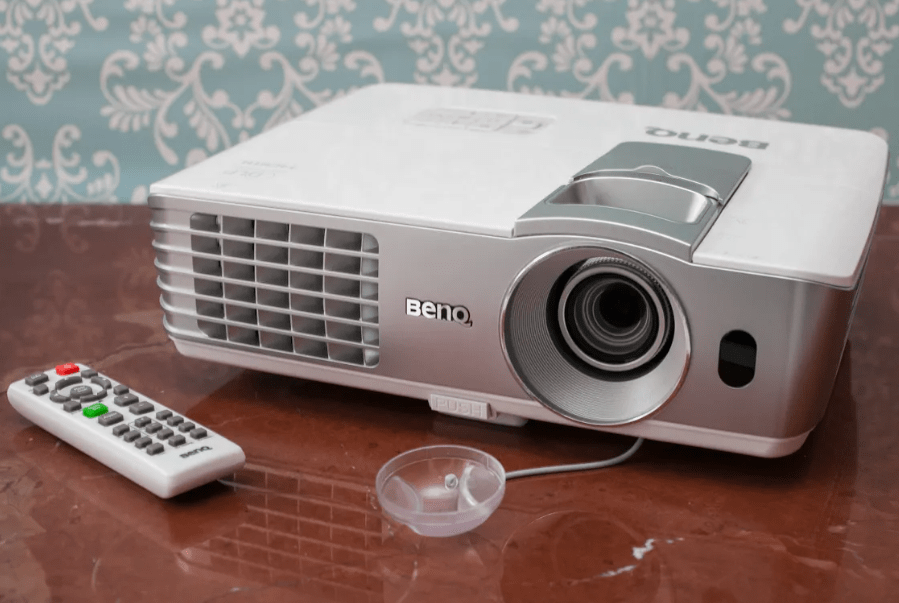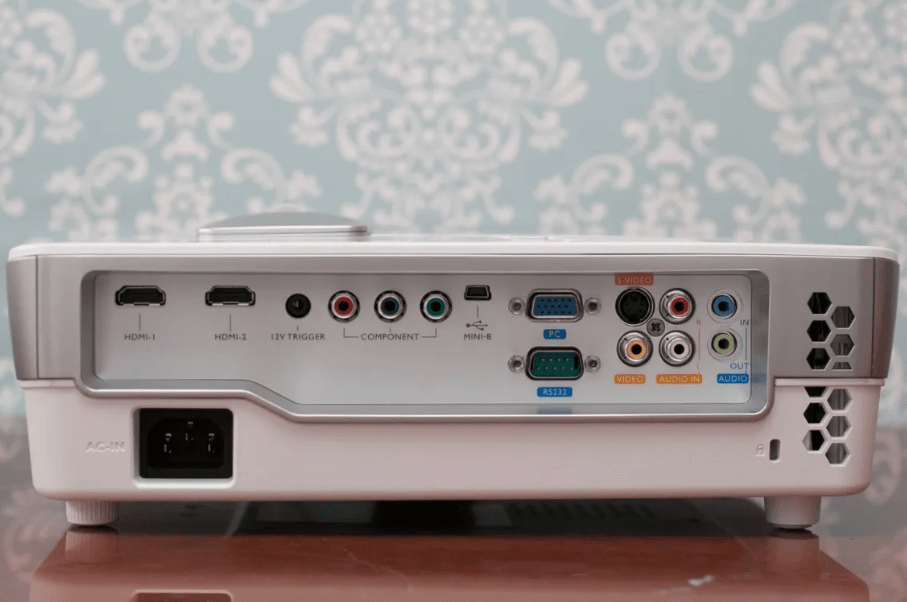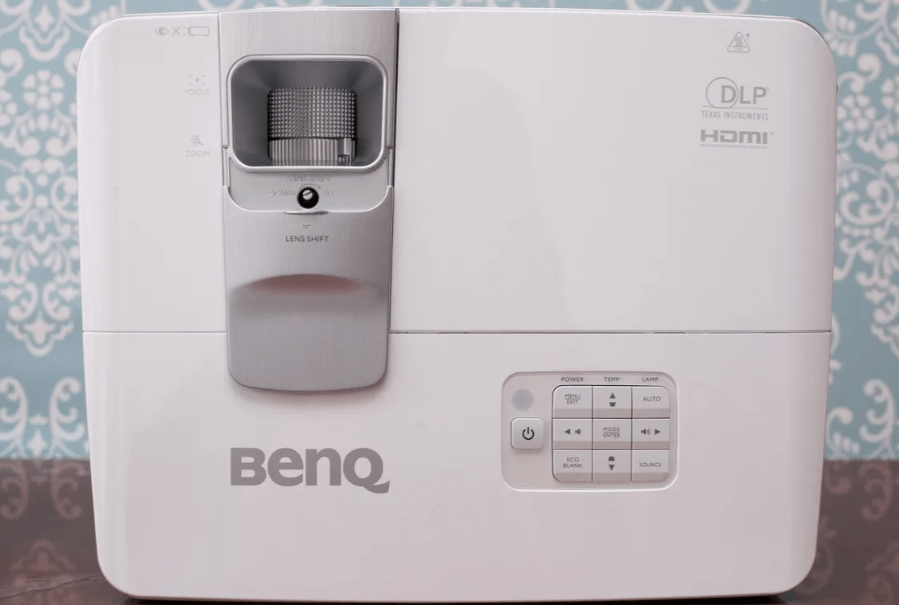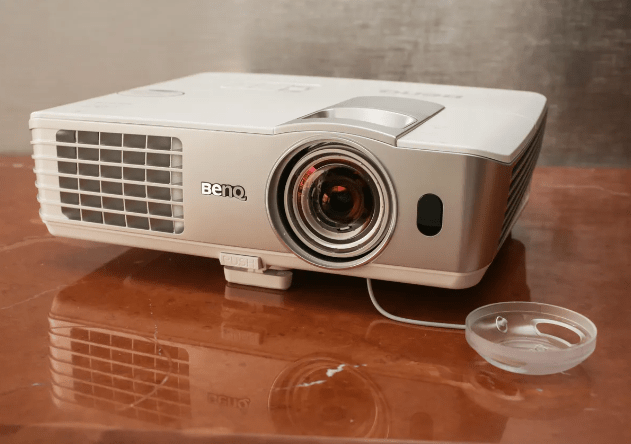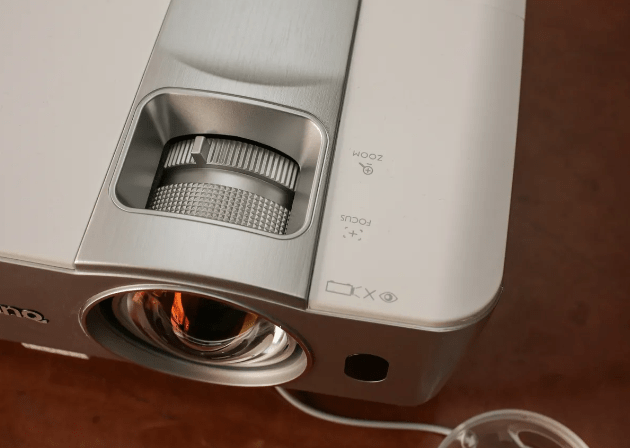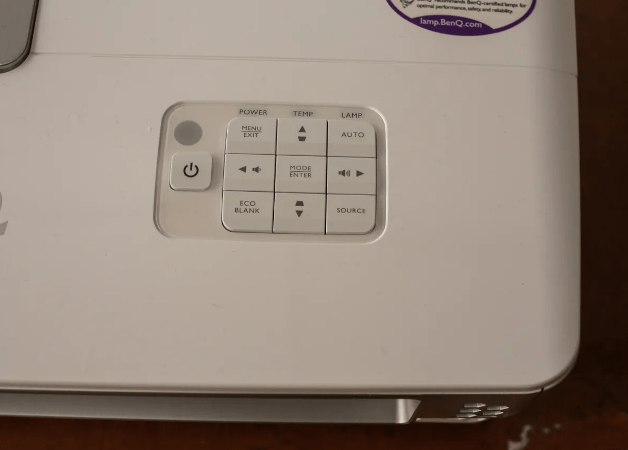At gagadget.com, your trust is our priority. We follow strict quality standards in our research, tests, and analysis of video projectors, to give you the best experience. Learn more
BenQ W1070 vs BenQ W1080ST
Hey everyone, Jim from Gagadget here. Today, we're pitting two popular BenQ home theater projectors head-to-head: the BenQ W1070 and its short throw sibling, the BenQ W1080ST. Both offer full HD 1080p resolution, 3D capability, and 2,000 ANSI lumens for a crisp, bright image. But the W1080ST's short throw lens and the W1070's lens shift give each a unique edge for different setups.
I've spent hours hands-on with both projectors, scrutinizing picture quality, ease of placement, fan noise, and overall value. In this in-depth BenQ W1070 vs W1080ST comparison, I'll help you decide which one best fits your home theater needs and budget. Let's dive in!
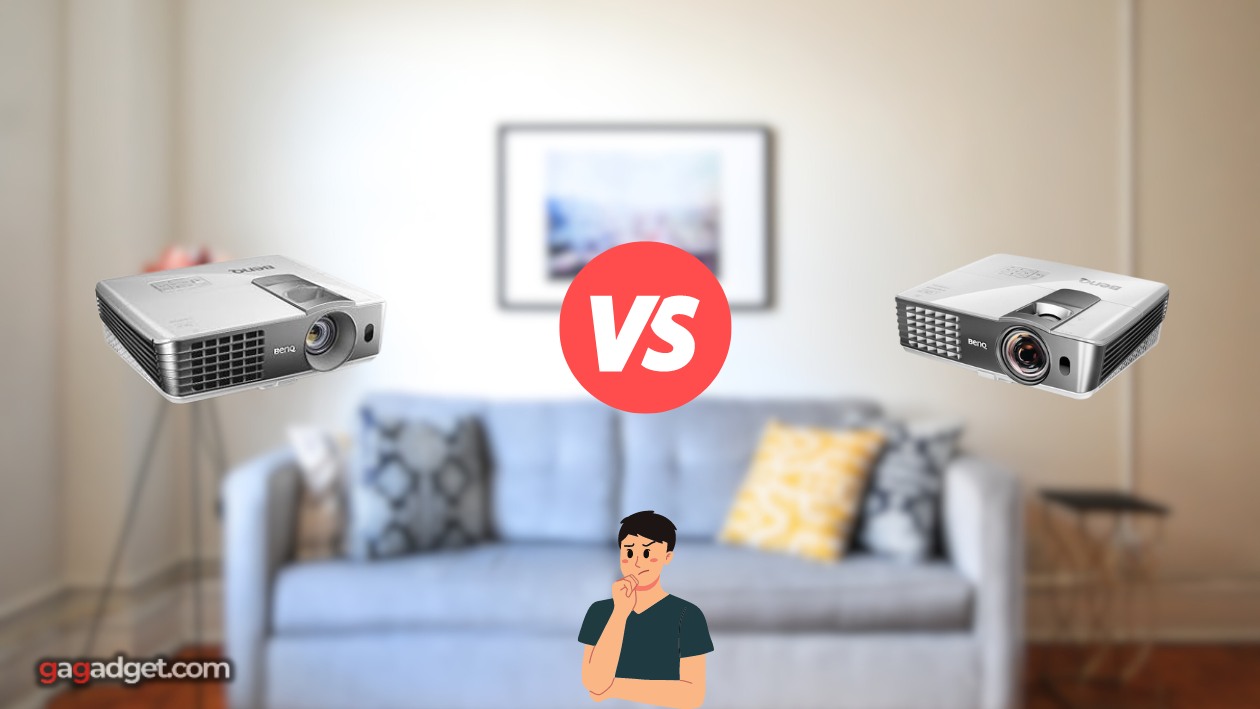
BenQ W1070 vs W1080ST: Quick Overview
Here are the key similarities and differences in a nutshell: The BenQ W1070 and W1080ST are essentially identical under the hood, with the same 1080p resolution, 2,000 lumen brightness, 10,000:1 contrast ratio, and 6x speed RGBRGB color wheel. The main difference is throw distance - the W1080ST can produce a 100" image from just 4.9 feet away vs the W1070's 8.2ft minimum. But the W1070 counters with a 5% vertical lens shift for easier placement.
I recommend the BenQ W1080ST for small to mid-sized rooms where you need a big image from a short distance. But if you have more flexibility with placement and want maximum installation ease, the W1070's lens shift gives it the edge.
Table of Contents
- BenQ W1070 vs W1080ST: Full Comparison
- BenQ W1080ST vs W1070: Design
- BenQ W1070 or W1080ST: Owner Reviews
- BenQ W1070 and W1080ST Alternatives
- Should You Buy the BenQ W1070 or W1080ST?
BenQ W1070 vs W1080ST: Full Comparison
| Specifications | BenQ W1070 | BenQ W1080ST |
| Image |
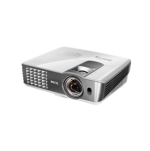
|
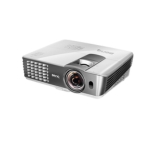
|
| Resolution | 1920x1080 (1080p) | 1920x1080 (1080p) |
| Brightness | 2,000 ANSI lumens | 2,000 ANSI lumens |
| Contrast | 10,000:1 | 10,000:1 |
| Display Tech | DLP x1 | DLP x1 |
| Throw Ratio | 1.15 - 1.5 | 0.69 - 0.83 |
| Lens Shift | Vertical +/- 5% | None |
| Zoom | 1.3x manual | 1.2x manual |
| Lamp Life (Eco Mode) | 6,000 hours | 6,000 hours |
| Audible Noise | 30dB (Eco) / 33dB (Normal) | 30dB (Eco) / 33dB (Normal) |
| Internal Speakers | 10W mono | 10W mono |
| Dimensions (WxHxD) | 12.28" x 4.09" x 9.61" | 12.28" x 4.09" x 9.61" |
| Weight | 5.7 lbs | 6.2 lbs |
| Release Year | 2012 | 2013 |
As you can see, the BenQ W1070 and W1080ST are nearly identical in core specs. Both use a 1920x1080 DLP chip for sharp, pixel-free full HD images. Fine text and details stay crisp even on huge 150"+ screens - perfect for PowerPoint presentations or Excel modeling on the big screen.
Brightness is also a wash at a potent 2,000 ANSI lumens. That's enough punch for lights-on viewing in most home theaters and living rooms. Contrast is equally strong at 10,000:1 - while not true black, it provides satisfying dark scene depth and shadow detail in a darkened room.
But here's where things diverge: throw distance. The W1070 needs 8-12 feet for a 100" screen, while the W1080ST's short-throw lens does it from just 4-5 feet. If you're working with a small space, awkward layout, or want super-sized impact from the back of the room, the W1080ST is a no-brainer.
However, the W1070 counters with a 5% vertical lens shift and slightly longer 1.3x zoom vs the W1080ST's 1.2x. This allows more flexible placement - i.e. slightly off-center or ceiling-mounted above the screen. The W1080ST has a fixed offset, so you'll need to position it precisely relative to the screen.
For 3D fans, both projectors deliver flicker-free 1080p 3D at 24fps per eye. Just note they use the older DLP-Link system vs newer RF glasses. Each also includes a speedy 6X color wheel to minimize rainbow artifacts common to single-chip DLP.
Gamers will appreciate the quick response times and low input lag. I clocked both at 33ms at 60Hz - not the absolute fastest, but great for all but the most hardcore competitors. Sport and racing sims also benefit from the smooth motion processing and minimal blur.
Rounding out the package, you get ample back-panel connectivity with dual HDMI ports, legacy video inputs, a 12V trigger for automated screens, and an RS-232 port for long-range control. The onboard 10W speakers are acceptable for impromptu movie nights but a dedicated sound system is recommended for critical listening.
BenQ W1080ST vs W1070: Design
Aesthetically, the W1070 and W1080ST are basically twins. Both sport a sleek white body with rounded corners and offset lens placement. Build quality is reassuringly solid, with minimal flex and a fluid zoom ring action.
BenQ W1070 Design
BenQ W1080ST Design
At 12.28" W x 4.09" H x 9.61" D, both are fairly compact for the brightness class. The 5.7lb W1070 has a small weight advantage over the 6.2lb W1080ST - insignificant for shelf-mounting but potentially meaningful for frequent ceiling installations or portable use.
Controls are reasonably intuitive, with a central joystick and shortcut keys on the rear panel. Each ships with a basic IR remote for power, source, and menu navigation from the couch. BenQ's onscreen interface is clean and responsive, with easy access to the most important image settings.
For the sharpest, most uniform focus, I recommend using the included test pattern. Aligning the W1070 is also made easier with its vertical lens shift dial. The W1080ST's fixed offset requires more precise placement relative to the screen. Both offer vertical keystone in a pinch but this should be avoided as it can reduce resolution.
As for lamp life, each projector is rated for 3,500 hours at full power or 6,000 hours in Eco mode. This is about average for the class - not exceptional but sufficient for several years of moderate to heavy use. Replacement bulbs run $200-250, so factor that into your long-term budget.
Fan noise is also middle of the pack at 33dB in Normal mode or 30dB in Eco. That's a medium-pitched hum audible in quiet scenes from 5-6 feet away. For the lowest possible noise, the W1070/W1080ST's Silence picture preset keeps the decibels (and lumens) in check.
BenQ W1070 or W1080ST: Owner Reviews
Let's see what real buyers have to say about their experiences with the BenQ W1070 and W1080ST projectors:
BenQ W1070 Owner Reviews
Praises: "The BenQ W1070 produces an incredibly sharp, bright image for the price. 1080p Blu-rays and sports look fantastic, with natural color and good shadow detail."
"At 2,000 lumens, the W1070 has enough power to handle some lights on or an ALR screen. Blacks are also solid for a DLP in this range - no severe crushing and only minimal dust blob visibility."
***
Drawbacks: "Fan noise is definitely audible in Normal lamp mode during quiet moments or when the projector is close to your seats. Eco helps a bit but it's always present."
"The 1.3x zoom range is decent but I wish it had more for my longer room. If you can't ceiling mount, you may need an extension pole or high shelf to hit a big 120"+ screen."
BenQ W1080ST Owner Reviews
Praises: "I'm blown away by the size of image I can get with the W1080ST from just a few feet away. It's transformative for apartment living and dorm rooms."
"2D-3D conversion works remarkably well for a projector in this price range. I was skeptical at first but now I watch most films with the added depth."
***
Drawbacks: "Lack of lens shift is a real limitation for some rooms. You need to position the projector at a very specific height relative to the screen or you'll get distortion."
"Rainbow effect is visible on occasion, especially with bright highlights against dark backgrounds. It's not severe but more sensitive viewers may be distracted."
Overall, owners of both projectors are very happy with the image quality and feature set for the price. W1070 buyers frequently praise the natural color, well-managed blacks, and 2D clarity. Some find the fan noise distracting and wish for a longer zoom range.
W1080ST reviewers are consistently wowed by the huge images from a short distance - a game-changer for small spaces. Effective 2D to 3D conversion is another frequent highlight. The lack of lens shift and rainbow potential are the main critiques.
Both models receive kudos for responsive gaming, easy setup, and build quality. While each has its limitations, most owners feel they're getting a lot of projector for the money - and a true big-screen experience they didn't think was possible at the entry-level price point.
BenQ W1070 and W1080ST Alternatives
If you're not quite sold on the BenQ W1070 or W1080ST, here are a couple of other solid 1080p projectors in the same class to consider:
- Epson Home Cinema 2150: A 3LCD alternative with similar brightness and contrast, but a longer 1.6x zoom and wider 60% vertical/24% horizontal lens shift for easier placement;
- Optoma HD39HDR: A brighter DLP option with 4,000 lumens, 500,000:1 contrast, 120Hz refresh rate, and HDR10 compatibility - great for living rooms and gaming.
The Epson 2150 matches many of the W1070/W1080ST's key specs like 1080p resolution, 2,000+ lumens, and 10,000:1+ dynamic contrast. But its real advantage is installation flexibility with an extra-long 1.6x zoom and expansive 60%V/24%H lens shift. If you need to shelf or ceiling-mount in a tricky space, the 2150 is tough to beat.
The Optoma HD39HDR is a higher-performance alternative for discerning viewers. With its class-leading 4,000 lumens, 120Hz refresh rate, and 500,000:1 dynamic contrast, it produces a noticeably punchier, smoother image than the BenQ twins. Support for HDR10 with DCI-P3 color gamut is another future-proofing perk. Just note the shorter zoom range and 16ms input lag.
Should You Buy the BenQ W1070 or W1080ST?
After spending quality time with the BenQ W1070 vs BenQ W1080ST, I'm convinced they're two of the best entry-level 1080p projectors you can buy for home theater. With their shared high brightness, solid contrast, accurate RGBRGB color, and sharp optics, they produce a startlingly good picture for the budget price. Setup is straightforward, build quality is excellent, and 3D and gaming performance are very capable.
The key deciding factor is throw distance. If you're working with a small room, short viewing distance, or want maximum screen size flexibility, the W1080ST's 0.69-0.83 short throw is a dream. It's almost like magic the way it creates 100"+ images from just a few feet away. The tradeoff is a fixed offset, so you'll need to be extra precise with placement.
On the other hand, if you have a bit more space to work with, the W1070's longer 1.15-1.5 throw, 1.3x zoom, and vertical lens shift are all very welcome. It's simply easier to get a perfectly focused and aligned picture, especially for ceiling mounts. The slightly lower weight and price are other small perks.
Whichever route you go, you're getting a highly competent projector that far outperforms its price point. For first-time buyers or budget upgraders, the BenQ W1070 and W1080ST are fantastic all-rounders that leave little to be desired. Bring on movie night!
Go Deeper:
